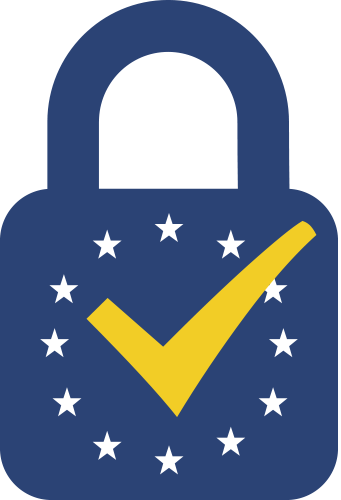|
China RealDID
China Real-Name Decentralized Identifier System (China RealDID, zh, 实名DID) is China's national-level decentralized identifier system. China RealDID was officially launched on December 12, 2023, by the First Research Institute of China's Ministry of Public Security and the Blockchain-based Service Network (BSN) China. China RealDID was developed as a real-name identity verification system based on blockchain technology, including real name verification, data encryption for personal data protection, secure private logins, business identity checks, and personal identification certificate services. It allows Chinese residents to access online services using DID addresses and private keys, maintaining anonymity with business platform operators while upholding real-name compliance in accordance with Chinese legislation that requires real-name registration for online accounts. In November 2024, China RealDID underwent trials in Hong Kong, allowing Mainland Chinese citizens tr ... [...More Info...] [...Related Items...] OR: [Wikipedia] [Google] [Baidu] |
Decentralized Identifier
A decentralized identifier (DID) is a type of globally unique identifier that enables an entity to be identified in a manner that is verifiable, persistent (as long as the DID controller desires), and does not require the use of a centralized registry. DIDs enable a new model of decentralized digital identity that is often referred to as a self-sovereign identity. They are an important component of decentralized web applications. DID documents A decentralized identifier resolves (points) to a DID document, a set of data describing the DID subject, including mechanisms, such as cryptographic public keys, that the DID subject or a DID delegate can use to authenticate itself and prove its association with the DID. DID methods Just as there are many different types of URIs, all of which conform to the URI standard, there are many different types of DID methods, all of which must conform to the DID standard. Each DID method specification must define: * The name of the DID meth ... [...More Info...] [...Related Items...] OR: [Wikipedia] [Google] [Baidu] |
Ministry Of Public Security (China)
The Ministry of Public Security (MPS, zh , c = , p = Gōng'ānbù ) is the primary law enforcement agency of the China, People's Republic of China. It oversees more than 1.9 million of the country's law enforcement officers and as such the vast majority of the People's Police (China), People's Police. While the MPS is a nationwide police force, conducting counterintelligence and maintaining the political security of the Chinese Communist Party (CCP) are also core functions. The ministry employs a system of Public security bureau (China), public security bureaus throughout the provinces, cities, municipalities and townships of China. The Special administrative regions of China, special administrative regions of Hong Kong and Macau maintain nominally separate police forces. The ministry is headed by the Minister of Public Security (China), minister of public security. Wang Xiaohong has been the minister in charge since June 2022. History The Ministry of Public Security was am ... [...More Info...] [...Related Items...] OR: [Wikipedia] [Google] [Baidu] |
Blockchain-based Service Network
The Blockchain-based Service Network (BSN) is a backend architecture in China for developing and managing blockchain-based applications, and is split into Chinese and International uses. BSN China, designed as the backbone of China's blockchain strategy, was established in 2018 and launched in 2020 by the State Information Center under the National Development and Reform Commission of China, China Mobile, China UnionPay(state-owned payment and settlement provider), and a technology architect. BSN International operates under the Singapore-based BSN Foundation. The BSN integrates both private and public blockchain frameworks and cloud service providers to build the underlying development and production environment, where enterprises, governmental bodies, and financial institutions can build Blockchain-as-a-Service Systems and blockchain applications while being compliant with China's regulations of non-cryptocurrencies. BSN International draws on Amazon Web Services data center ... [...More Info...] [...Related Items...] OR: [Wikipedia] [Google] [Baidu] |
Real-name System
A real-name system is a system in which users can register an account on a blog, website or bulletin board system using their legal name. Users are required to provide identification credentials and their legal name. A public pseudonym can also be used, but the person's identity is available to legal authorities for use in criminal investigations. Real-name systems are employed on websites such as Facebook and Quora. History Real name systems originated from government regulations. Governments provided citizens with official surnames. This allowed them to track property ownership and inheritance, collect taxes, maintain court records, perform police work, conscript soldiers and control epidemics. Use in different countries Germany For privacy reasons, Germany’s 1997 § 13 VI Telemediengesetz (nowadays: § 19 II TTDSG) does not allow forcing people to use real-names if a real-name is not necessary for an internet service. On 27 January 2022, the highest court in civil mat ... [...More Info...] [...Related Items...] OR: [Wikipedia] [Google] [Baidu] |
Blockchain
The blockchain is a distributed ledger with growing lists of Record (computer science), records (''blocks'') that are securely linked together via Cryptographic hash function, cryptographic hashes. Each block contains a cryptographic hash of the previous block, a Trusted timestamping, timestamp, and transaction data (generally represented as a Merkle tree, where Node (computer science), data nodes are represented by leaves). Since each block contains information about the previous block, they effectively form a ''chain'' (compare linked list data structure), with each additional block linking to the ones before it. Consequently, blockchain transactions are resistant to alteration because, once recorded, the data in any given block cannot be changed retroactively without altering all subsequent blocks and obtaining network consensus to accept these changes. Blockchains are typically managed by a peer-to-peer, peer-to-peer (P2P) computer network for use as a public distributed led ... [...More Info...] [...Related Items...] OR: [Wikipedia] [Google] [Baidu] |
Internet Real-name System In China
The Internet real-name system in China is a real-name system in which Internet service providers and Internet content providers (especially user-generated content sites) in the People's Republic of China are required to collect users' real names, ID numbers, and other information when providing services. Since the implementation of the real-name system on the Internet may lead to the infringement and narrowing of the constitutionally protected speech space of Internet users, it has attracted concerns from all sides and generated much controversy in Chinese society. Few other countries, such as South Korea, have implemented a real-name system on the Internet. History Proposal to ban anonymity in civil society The origin of the proposed ban on anonymity in mainland China is generally believed to be the proposal made by Li Xiguang, a journalism professor at Tsinghua University, in 2002, when he talked about journalism reform in the South, that "the Chinese National People's Congress sh ... [...More Info...] [...Related Items...] OR: [Wikipedia] [Google] [Baidu] |
Self-sovereign Identity
Self-sovereign identity (SSI) is an approach to digital identity that gives individuals control over the information they use to prove who they are to websites, services, and applications across the web. Without SSI, individuals with persistent accounts (identities) across the internet must rely on a number of large identity providers, such as Facebook (Facebook Connect) and Google (Google Sign-In), that have control of the information associated with their identity. If a user chooses not to use a large identity provider, then they have to create new accounts with each service provider, which fragments their web experiences. Self-sovereign identity offers a way to avoid these two undesirable alternatives. In a self-sovereign identity system, the user accesses services in a streamlined and secure manner, while maintaining control over the information associated with their identity. Background The TCP/IP protocol provides identifiers for machines, but not for the people and org ... [...More Info...] [...Related Items...] OR: [Wikipedia] [Google] [Baidu] |
Identity-based Security
Identity-based security is a type of security that focuses on access to digital information or services based on the authenticated identity of an entity. It ensures that the users and services of these digital resources are entitled to what they receive. The most common form of identity-based security involves the login of an account with a username and password. However, recent technology has evolved into fingerprinting or facial recognition. While most forms of identity-based security are secure and reliable, none of them are perfect and each contains its own flaws and issues. History The earliest forms of Identity-based security was introduced in the 1960s by computer scientist Fernando Corbató. During this time, Corbató invented computer passwords to prevent users from going through other people's files, a problem evident in his Compatible Time-Sharing System (C.T.S.S.), which allowed multiple users access to a computer concurrently. Fingerprinting however, although not ... [...More Info...] [...Related Items...] OR: [Wikipedia] [Google] [Baidu] |
EIDAS
The eIDAS Regulation (for "electronic IDentification, Authentication and trust Services") is an regulation (European Union), EU regulation with the stated purpose of governing "electronic identification and trust service provider, trust services for electronic transactions". It passed in 2014 and its provisions came into effect between 2016 and 2018. The eIDAS Regulation was fundamentally amended by Regulation (EU) 2024/1183 of the European Parliament and of the Council of the European Union, Council of 11 April 2024. The main purpose of the amendment is to introduce a voluntary digital wallet (European Digital Identity) that Member state of the European Union, member states must issue at the request of European Union citizenship, EU citizens. Description The eIDAS-Regulation oversees electronic identification and trust services for electronic transactions in the European Union's European Single Market, internal market. It regulates electronic signatures, electronic transactio ... [...More Info...] [...Related Items...] OR: [Wikipedia] [Google] [Baidu] |
Electronic Signatures In Global And National Commerce Act
The Electronic Signatures in Global and National Commerce Act (ESIGN, , ) is a United States federal law, passed by the U.S. Congress to facilitate the use of electronic records and electronic signatures in interstate and foreign commerce. This is done by ensuring the validity and legal effect of contracts entered into electronically; the Act was signed into law by President Bill Clinton on June 30, 2000, and took effect on October 1, 2000. Although every state has at least one law pertaining to electronic signatures, it is the federal law that lays out the guidelines for interstate commerce. The general intent of the ESIGN Act is spelled out in the first section (101.a), that a contract or signature “may not be denied legal effect, validity, or enforceability solely because it is in electronic form”. This simple statement provides that electronic signatures and records are just as good as their paper equivalents, and therefore subject to the same legal scrutiny of authe ... [...More Info...] [...Related Items...] OR: [Wikipedia] [Google] [Baidu] |
Blockchains
The blockchain is a distributed ledger with growing lists of records (''blocks'') that are securely linked together via cryptographic hashes. Each block contains a cryptographic hash of the previous block, a timestamp, and transaction data (generally represented as a Merkle tree, where data nodes are represented by leaves). Since each block contains information about the previous block, they effectively form a ''chain'' (compare linked list data structure), with each additional block linking to the ones before it. Consequently, blockchain transactions are resistant to alteration because, once recorded, the data in any given block cannot be changed retroactively without altering all subsequent blocks and obtaining network consensus to accept these changes. Blockchains are typically managed by a peer-to-peer (P2P) computer network for use as a public distributed ledger, where nodes collectively adhere to a consensus algorithm protocol to add and validate new transaction bloc ... [...More Info...] [...Related Items...] OR: [Wikipedia] [Google] [Baidu] |



